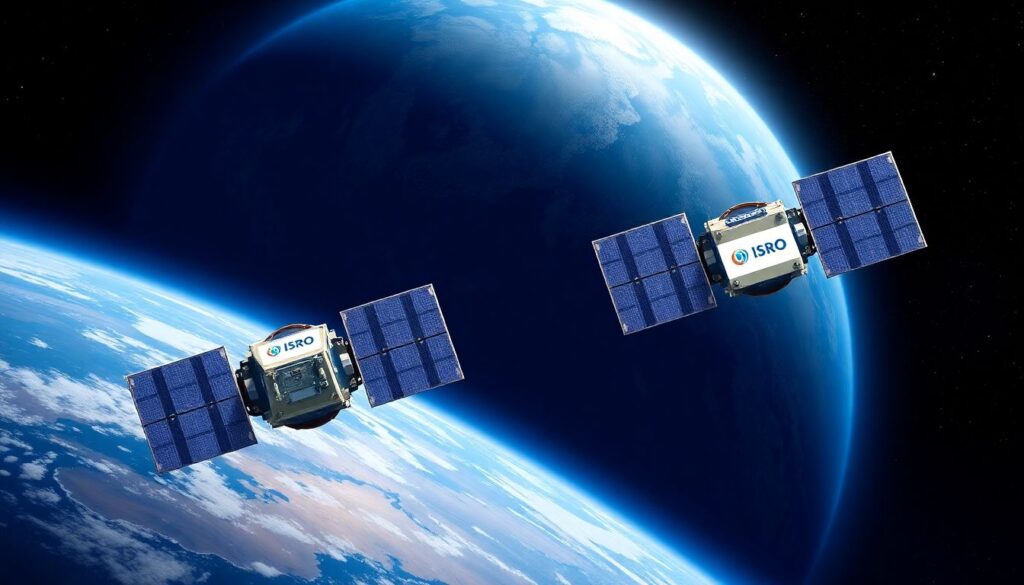India’s space odyssey is set to reach new heights as the Indian Space Research Organisation (ISRO) prepares for its most ambitious challenge yet. Next week, ISRO will attempt its first-ever satellite docking experiment, a critical step towards advanced space exploration and establishing India’s prowess in the final frontier.
Heavenly Handshake: India prepares for its maiden satellite docking experiment, SpaDeX, on January 7, marking a bold step toward cutting-edge space exploration.
Imagine the vast, silent ballet of space, where two metallic dancers slowly inch towards each other, high above the blue marble we call Earth. These aren’t just any satellites; they bear the proud insignia of ISRO, India’s stellar space agency, a testament to the country’s astronomical ambitions and achievements.
As they approach each other, these satellites are akin to a pair of old friends reuniting, ready to share data, stories, and secrets from their respective journeys. They are not just cold, lifeless machines, but emissaries of human curiosity and ingenuity, destined to unravel the mysteries of the universe.
With Earth as a distant, serene backdrop, these two ISRO satellites are a reminder of how far we’ve come and how far we’ll go. They are a testament to the power of human endeavor, a beacon of hope and progress, and a symbol of India’s strides in the cosmic dance of space exploration.
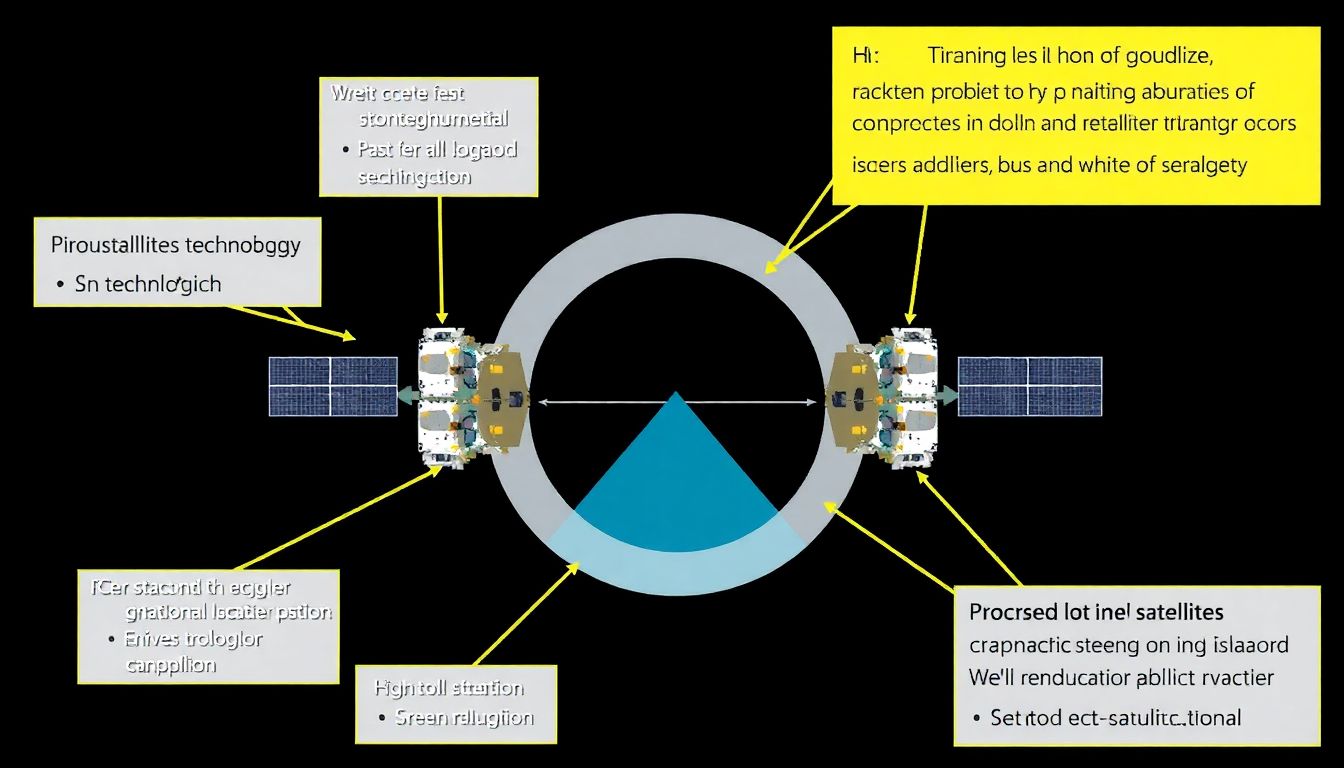
The Significance of SpaDeX
The SpaDeX (Space Docking Experiment) mission is a monumental leap for the Indian Space Research Organisation (ISRO) and India’s space program. This mission is not just about sending another satellite into orbit; it’s about mastering the complex technology of docking and undocking in space. Think of it as a space-age dance where two spacecraft meet, lock onto each other, and then separate. This capability is crucial for a variety of future missions, including establishing space stations, repairing and refueling satellites, and even exploring deeper into the cosmos.
Technologically, SpaDeX is a giant step forward. It involves precision maneuvering, advanced sensors, and sophisticated algorithms to ensure that the two spacecraft can rendezvous safely. Here are some of the key technological advancements:
- Advanced navigation systems to guide the spacecraft towards each other.
- Robust docking mechanisms to ensure a secure connection.
- State-of-the-art sensors and cameras to monitor the process in real-time.
- Complex algorithms to handle any potential issues or contingencies.
These technologies are not just about space; they have applications back on Earth, such as in robotics, autonomous vehicles, and advanced manufacturing.
The international implications of the SpaDeX mission are profound. A successful mission will put India in an elite club of countries that have mastered space docking technology. This includes the USA, Russia, China, and a few European nations. It’s a testament to India’s growing prowess in space technology and its ambition to play a significant role in the global space arena. Moreover, it opens up opportunities for international collaboration. Other countries may look to ISRO for partnerships in complex space missions, further enhancing India’s reputation as a space-faring nation.
Looking ahead, the SpaDeX mission could be a stepping stone towards more ambitious projects. It could pave the way for India’s own space station, a goal that ISRO has already set its sights on. It could also lead to missions to the Moon, Mars, and beyond. With each success, ISRO and India’s space program take a giant leap, inspiring a new generation of scientists, engineers, and explorers. The SpaDeX mission is more than just a technical feat; it’s a symbol of India’s aspirations and its place in the global space community.
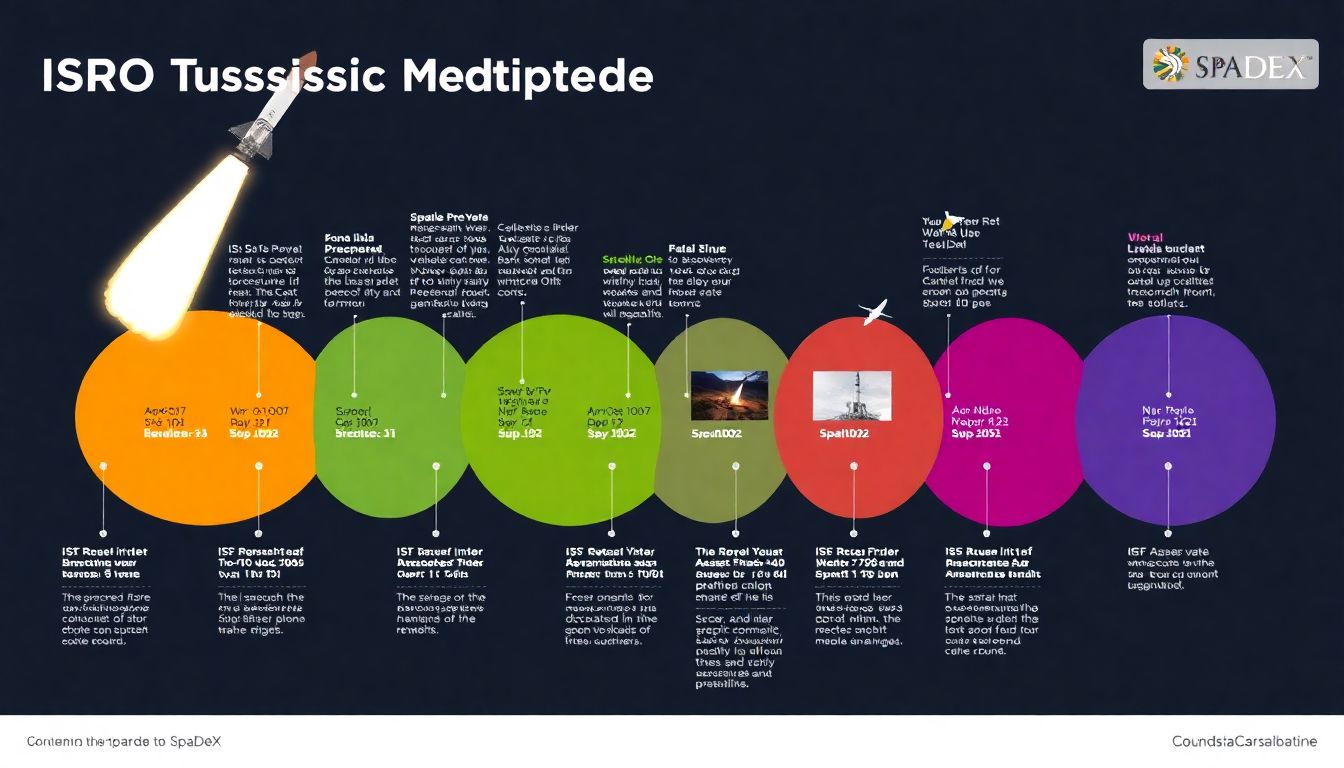
The Road to SpaDeX
The journey leading up to the SpaDeX mission is a testament to the Indian Space Research Organisation’s (ISRO) dedication and technological prowess, a saga of innovation and resilience that spans decades.
It all began with the first satellite, Aryabhata, launched in 1975. This initial step into space was followed by a series of successful missions that laid the foundation for ISRO’s future endeavors. The Indian Remote Sensing (IRS) program and the Indian National Satellite (INSAT) system established ISRO’s prowess in satellite technology. These missions not only aided in Earth observation and communication but also honed ISRO’s capabilities in launch vehicle technology.
The turn of the millennium saw ISRO setting its sights on the Moon with the Chandrayaan program.
- Chandrayaan-1, launched in 2008, was ISRO’s first lunar probe and marked a significant milestone in India’s space exploration history.
- The mission discovered water molecules on the Moon, contributing significantly to lunar science.
- Building on this success, Chandrayaan-2 was launched in 2019. Despite the lander’s hard landing, the orbiter continues to provide valuable data, further enriching our understanding of the Moon.
Now, ISRO is all set to take another giant leap with the SpaDeX mission.
- Short for Space Docking Experiment, SpaDeX will demonstrate ISRO’s capabilities in autonomous docking technology, a critical step towards establishing a robust infrastructure in space.
- The mission will involve two satellites, which will perform a series of complex maneuvers to dock with each other in low Earth orbit.
- With SpaDeX, ISRO aims to master technologies that will be instrumental in future missions like Gaganyaan, India’s first human spaceflight program, and even a potential space station.
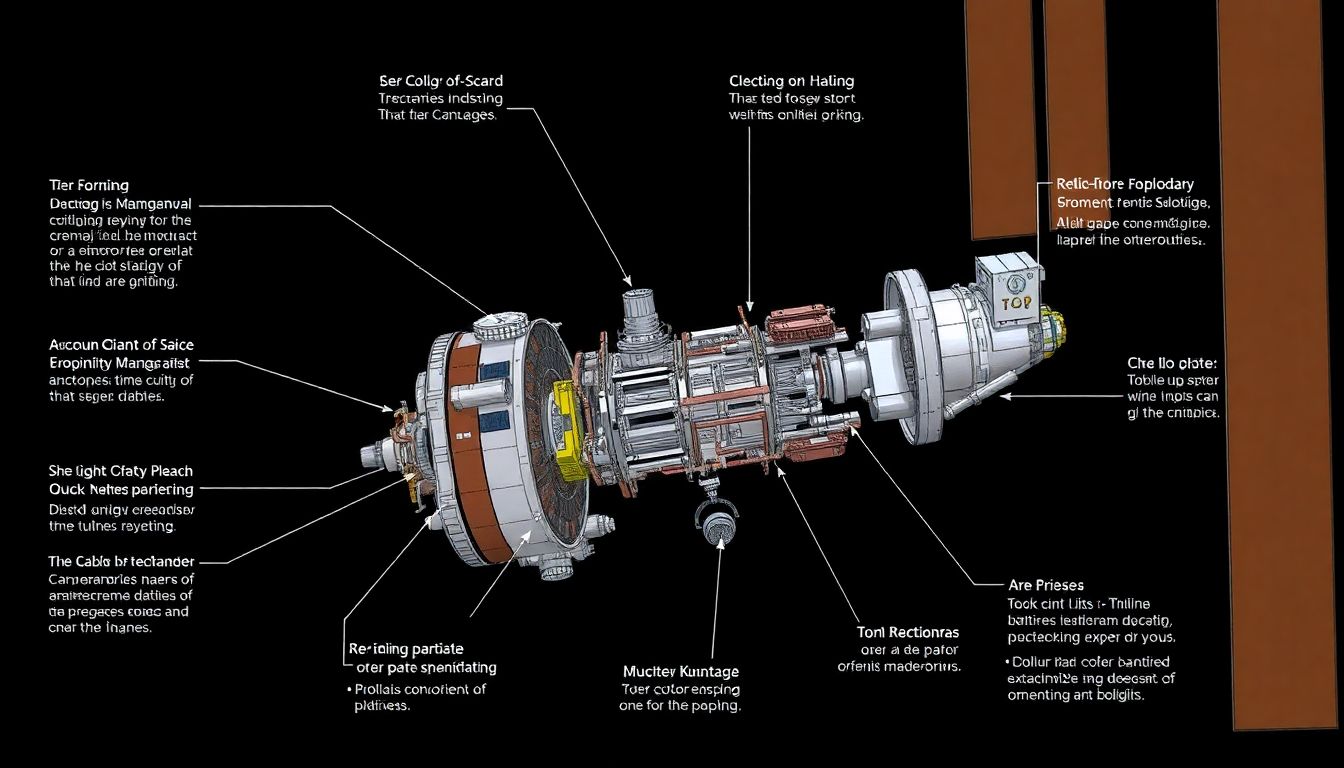
The Technology Behind the Mission
Embarking on an ambitious journey to revolutionize space exploration, ISRO’s SpaDeX mission is a testament to the prowess of Indian engineering and innovation. SpaDeX, or Space Docking Experiment, is not just a mission; it’s a leap forward in India’s space capabilities. The mission entails a series of innovative technologies working in sync, from advanced navigation systems to sophisticated docking mechanisms. At the heart of SpaDeX lies the Autonomous Docking System, a marvel of engineering that enables two spacecraft to connect in the void of space without human intervention.
The challenges faced by ISRO in developing SpaDeX were as vast as the space it aims to explore. One of the primary hurdles was designing a system that could withstand the harsh conditions of space while maintaining precision and accuracy. To overcome this, ISRO developed:
- High-Precision Sensors: These sensors provide real-time data, enabling the spacecraft to make micro-adjustments during the docking process.
- Robust Algorithms: Advanced algorithms process the sensor data, ensuring accurate decision-making in microgravity.
- Lightweight Materials: Innovative materials reduce the overall weight of the spacecraft, making the mission more fuel-efficient.
Another significant challenge was the development of a fail-safe mechanism to ensure the safety of the spacecraft and the mission’s success. ISRO’s solution was the Emergency Abort System, a safety net designed to engage at any sign of trouble. This system, coupled with the Health Monitoring System, ensures that the spacecraft are in optimal condition throughout the mission.
The success of SpaDeX is not just about achieving a technological milestone; it’s about opening new avenues for space exploration. With SpaDeX, ISRO aims to:
- Establish a reliable system for in-orbit assembly and servicing of spacecraft, extending their lifespan and reducing costs.
- Enable complex missions like space-based solar power and large-scale space telescopes.
- Foster international collaboration by demonstrating India’s capabilities in advanced space technologies.
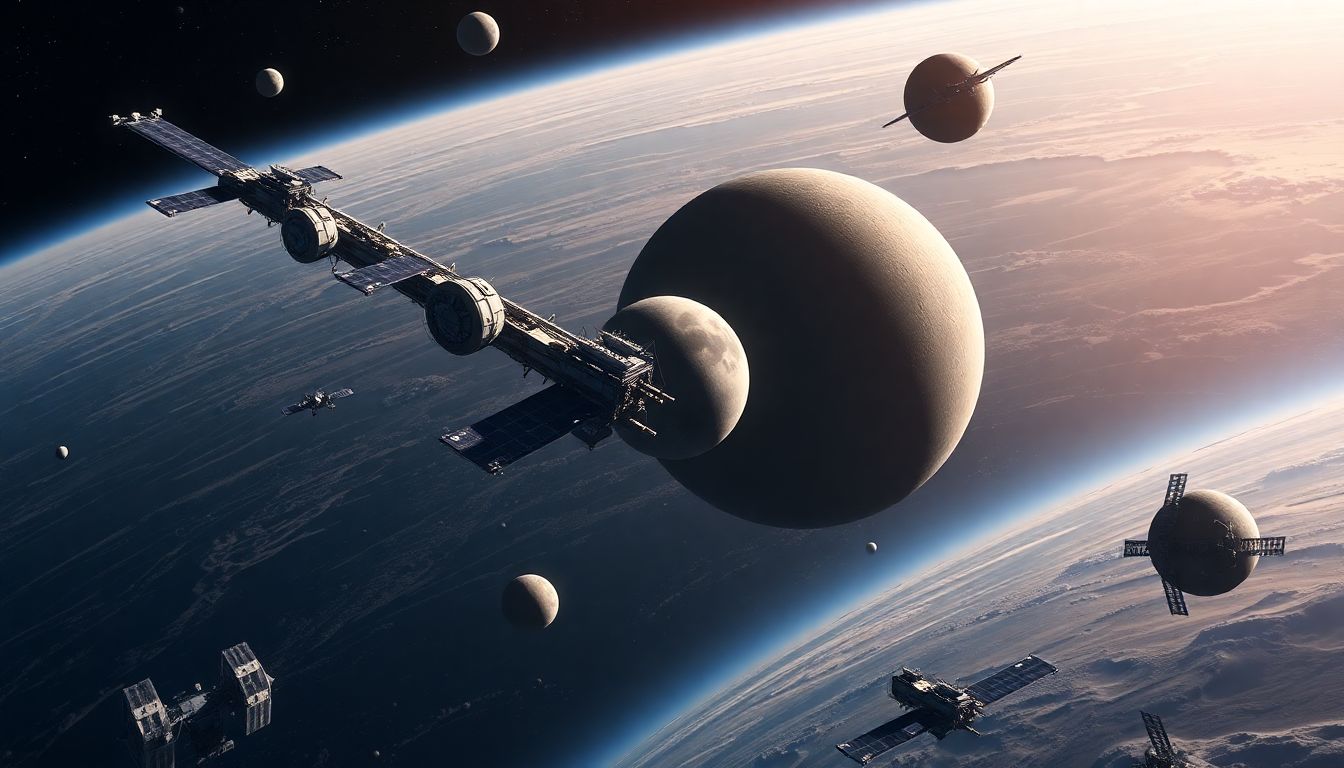
Looking Ahead: The Future of Indian Space Exploration
The recent unveiling of SpaDeX, India’s cutting-edge space exploration program, has opened up a realm of thrilling possibilities for the nation’s space endeavors. With a focus on innovative technologies and ambitious missions, SpaDeX is set to propel India to the forefront of global space exploration. The program’s inaugural missions are expected to include soft landings on the Moon and Mars, showcasing India’s prowess in precision engineering and interplanetary navigation. Furthermore, SpaDeX aims to explore asteroids and comets, offering unprecedented insights into the origins of our solar system.
The potential missions under SpaDeX are nothing short of extraordinary. Consider the following:
- Establishment of a human space station, enabling long-duration space habitation and scientific research.
- Lunar base construction for in-situ resource utilization, paving the way for sustainable space exploration.
- Mars sample-return mission to search for signs of ancient life and understand the red planet’s geological history.
- Development of advanced satellite technologies for enhanced Earth observation, communication, and navigation.
The impact of SpaDeX on global space exploration is expected to be profound. By demonstrating the feasibility of low-cost, high-impact missions, India can inspire other nations to pursue more ambitious space programs. Additionally, SpaDeX’s focus on international collaboration can foster a new era of global cooperation in space, leading to shared scientific discoveries and technological advancements. As India continues to push the boundaries of space exploration, it continues to solidify its status as a major player in the global space arena.
Moreover, SpaDeX holds immense potential for spin-off technologies and applications that can benefit life on Earth. From advanced materials and manufacturing techniques to cutting-edge robotics and automation, the innovations driven by SpaDeX can stimulate economic growth and improve the quality of life for all Indians. By investing in space exploration, India is not only asserting its technological prowess but also nurturing a culture of innovation and inspiration for future generations.
FAQ
What is the SpaDeX mission?
Why is satellite docking important?
- Enables the assembly of larger structures in space, such as space stations.
- Facilitates the refueling and repair of satellites, extending their lifespan.
- Opens up possibilities for more complex space missions, including human spaceflight.
What are the key challenges in satellite docking?
- Precise alignment and maneuvering of satellites in microgravity.
- Developing robust and reliable docking mechanisms.
- Ensuring data and communication systems work flawlessly during the docking process.



